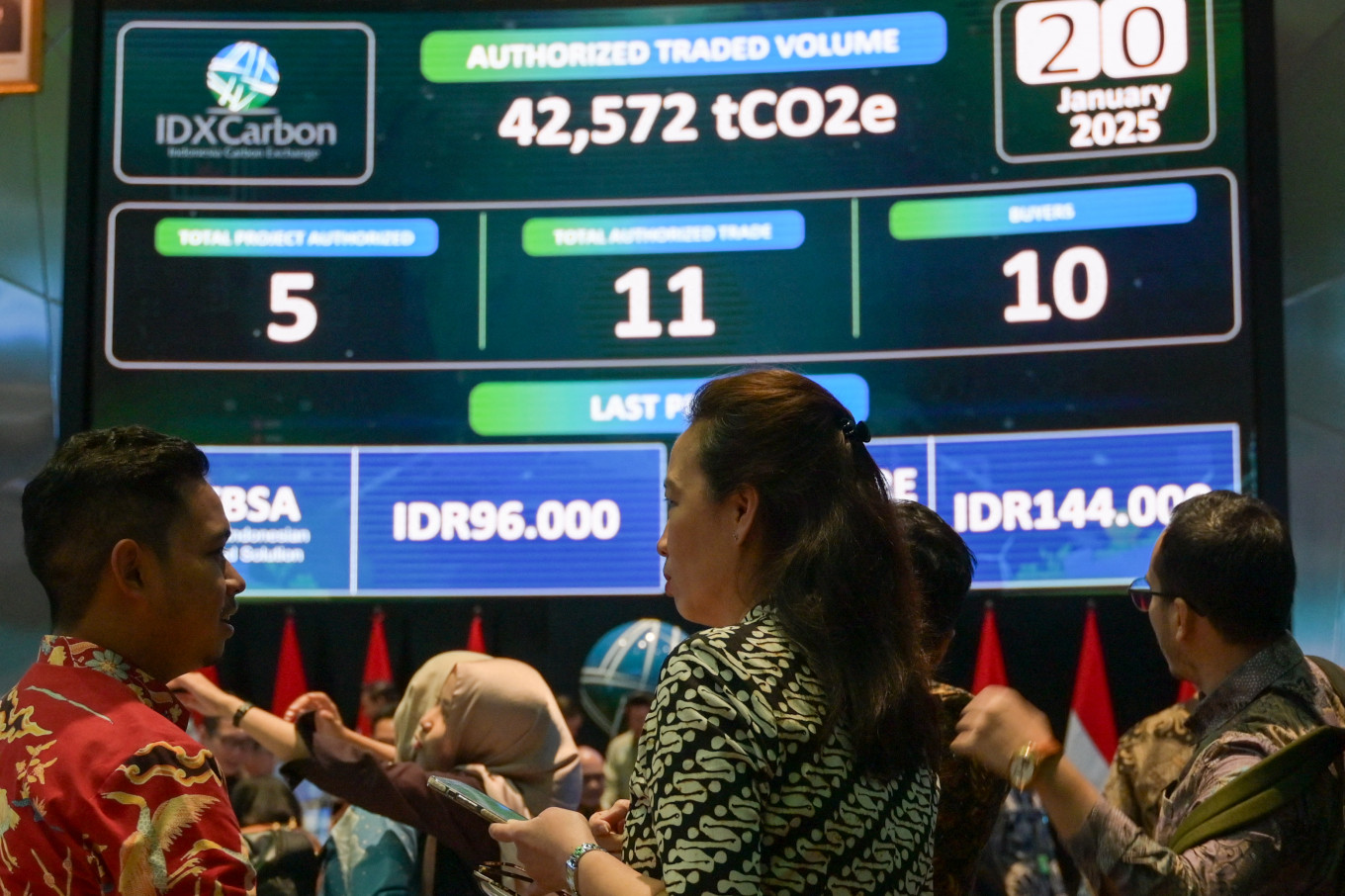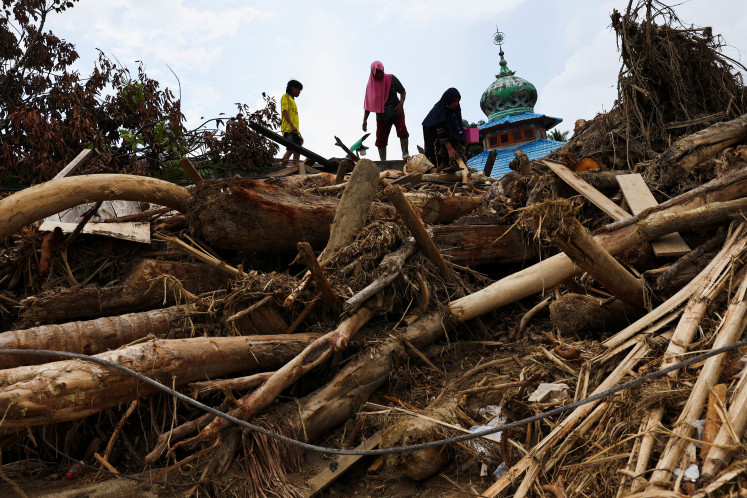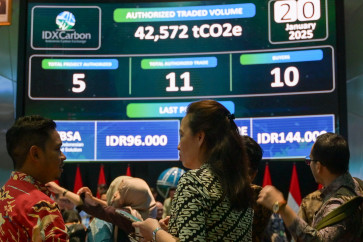Popular Reads
Top Results
Can't find what you're looking for?
View all search resultsPopular Reads
Top Results
Can't find what you're looking for?
View all search resultsPrioritizing quality over expansion in Indonesia's carbon market
While the move to open IDXCarbon internationally marks a milestone in Indonesia's green transition and offers many opportunities, the government needs to ensure that a host of technical and institutional elements are in place, lest it be seen as a superficial commitment to climate action.
Change text size
Gift Premium Articles
to Anyone
I
ndonesia Carbon Exchange (IDXCarbon) announced on Jan. 20 that it was now open to foreign buyers, marking a significant milestone in the country’s climate solution through a market-based instrument. Unlocking Indonesia’s carbon offset market to international buyers provides opportunities, such as enhancing market liquidity and facilitating more robust price discovery.
Nevertheless, the main objective of putting a price on carbon should extend beyond selling carbon credits and earning a profit in return: It should be about creating the right incentive to reduce greenhouse gas (GHG) emissions and encouraging the economy to grow, decoupling from GHG emissions in the long term.
For instance, the International Carbon Action Partnership (ICAP) and the World Bank argue in their book, Emissions Trading in Practice (2021), that institutional arrangements, sector and gas scoping, allocating carbon allowances, setting the right cap and promoting compliance and enforcement should be done before establishing the offset market and linking emissions trading systems (ETSs).
Carbon offset and linking should be the lowest priority in designing a carbon market for several reasons.
First, ensuring environmental integrity, where offset projects have check-listed additionality, permanence and genuine emissions reductions, is complex and costly. In many cases, double or even triple verifications from different verifiers are required to be eligible for high-integrity credits, which leads to high costs. Also, Indonesia’s current regulations allow verification methodologies that are not aligned with international standards, undermining the integrity of current carbon credits.
Second, public perception and credibility risks shadow the carbon offset market, which is perceived as a way for companies to “buy a way out” of compliance rather than making genuine emission reductions. Thus, carbon offset credits should be a last resort for companies when emissions are deemed unavoidable.
This is why mature carbon markets, such as California’s Cap-and-Trade Program, have an offset market cap of only 4 percent for use in the compliance market. Moreover, the European Union ETS has not accepted offsets since 2021.



















